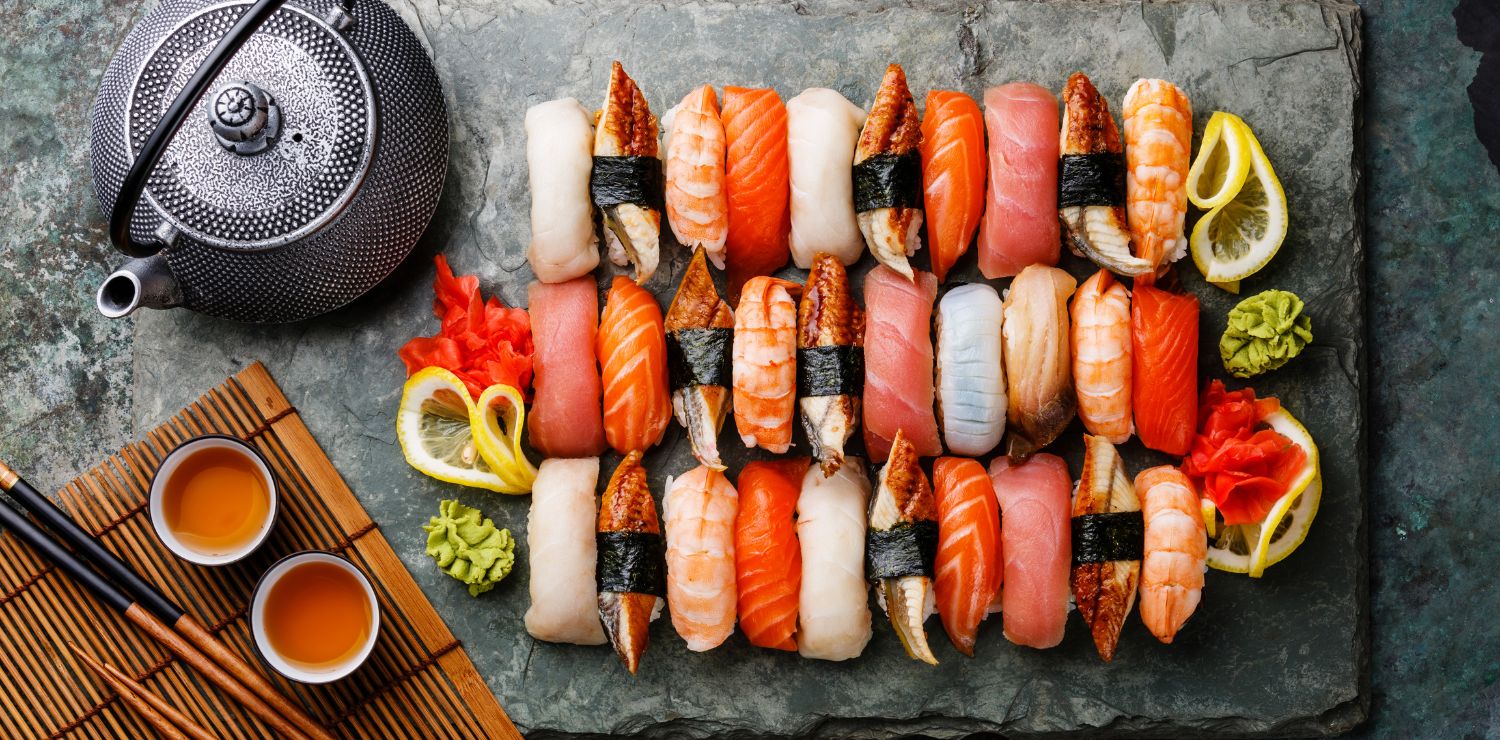Sushi, the quintessential Japanese specialty
In the vast culinary universe, few dishes around the world elicit as much admiration and passion as Japanese sushi. These delights of Japanese cuisine have crossed national borders and become a true icon of gastronomy worldwide. Let's dive together into this universe of sushi, where tradition, freshness, and creativity unite to create an unforgettable gustatory experience.
An ancient history, a living tradition
Sushi has a rich and complex history, dating back over 1000 years in Japan. Originally, they were designed as a method of preserving fish. Indeed, the vinegared rice allowed for the preservation of the flesh's freshness. These early sushi were prepared by tightly sealing fish and rice in wooden boxes for several months, allowing for natural fermentation. When it was time to eat, only the fish was consumed, and the rice was discarded.
This technique later evolved to allow for the consumption of the vinegared rice as well, giving birth to sushi as we know it today. The Edo period in Japan (1603-1868) was particularly significant in the development and democratization of sushi, with the emergence of the first restaurants specializing in this type of product.
Today, sushi is more than just a dish: it is a real culinary tradition passed down from generation to generation. Each sushi tells the story of the region where the ingredients come from, but also that of the chef who crafted it and the artisanal skill involved in its creation.
A palette of flavors and textures
Sushi is truly unique in its ability to offer a multitude of flavors and textures in one bite. From the choice of fresh, flavorful fish to the crunchy veggies, through delicate sauces, each ingredient is carefully selected to complement and enhance each product.
Sushi offers a variety of countless flavor combinations, even infinite. Between the sweetness of tuna, the richness of salmon, the delicacy of avocado, rest assured that there is a sushi for every preference and every palate. In addition, the sauces used, such as soy sauce, wasabi, and pickled ginger, add complementary notes that enrich the tasting experience.
In terms of textures, sushi offers a spectrum ranging from soft to crunchy through to melt-in-your-mouth. From fluffy rice to delicately sliced fish to crunchy vegetables, each bite is a symphony of tactile sensations that delight the taste buds.
Meticulous preparation, an art of detail
Making sushi requires very meticulous preparation. Each grain of rice that has been cooked to perfection should be seasoned just right to achieve the ideal texture and taste. The vinegared rice, also known as "shari," is often the key element of sushi as it is indeed the base on which all other ingredients rest.
The fish used to prepare sushi is selected with the utmost care. The freshness of the product is essential. Sushi chefs often source from local fish markets to guarantee product quality. Once the fish is in their expert hands, sushi chefs use precise cutting techniques to reveal the freshness and natural flavor of each piece.
Beyond rice and fish, sushi can be made up of other ingredients as well, such as vegetables, seafood, fish eggs, and seaweed. The creativity of sushi chefs knows no boundaries, and each creation is a unique expression of their talent and craftsmanship.
An unforgettable culinary experience
In the end, eating sushi goes beyond simply satisfying hunger. It's a complete and varied culinary experience that engages all the senses, from sight to taste through smell and touch. Each bite is a discovery, an exploration of flavors and textures that transport your taste buds on a journey to the heart of Japanese culture.
Whether you're a cooking enthusiast or an avid gastronomic explorer, sushi offers an unforgettable culinary experience to savor and enjoy. So give in to the art of sushi, and dive into a world of Japanese delights where each bite tells a unique story.


The traditional craftsmanship of Japanese kitchen knives
Damascus Steel Blades and its Manufacturing Techniques Worldwide